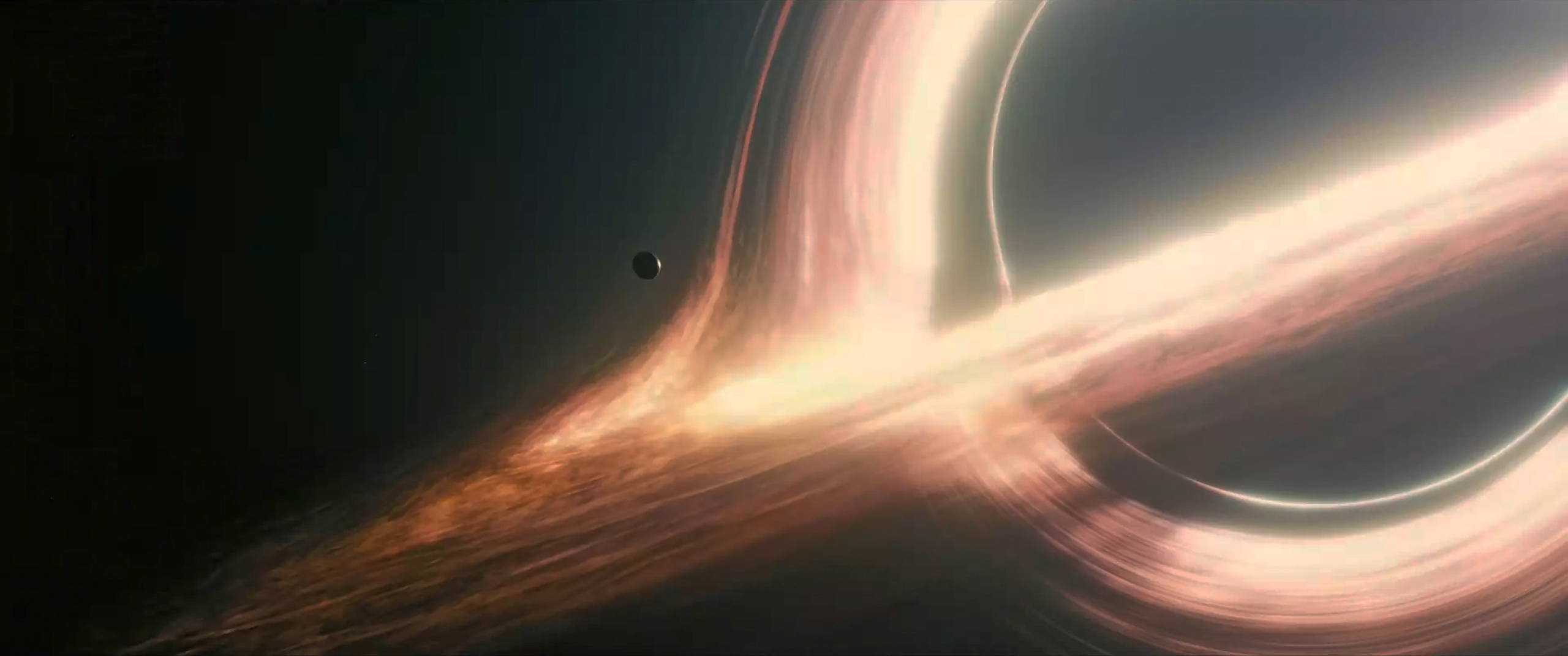'Interstellar' Science: Physicist Kip Thorne Writes the Book

If a picture is worth a thousand words, it makes sense that the movie "Interstellar" needs an entire book to explain the science behind its amazing visuals.
In "The Science of 'Interstellar'" (W.W. Norton & Company, 2014), Caltech physicist Kip Thorne takes readers on a short swim through the very deep physics that underlies some of the amazing sights from the movie: black holes, higher dimensions and 4,000-foot-tall (1,200 meters) waves.
Thorne joined the "Interstellar" project in 2005, when it was just a seed of an idea by producer Lynda Obst, Thorne's longtime friend. Thorne stayed on board throughout the production of the movie, and worked as a science consultant for screenwriter Jonathan Nolan and director Christopher Nolan. [The Science of 'Interstellar' Explained (Infographic)]
The book captures the back and forth between Thorne and the Nolan brothers. Thorne invested considerable effort to make sure that the science in the film was either based in fact, or at the very least, was not an outright violation of the laws of physics. In each section of the book, Thorne indicates if the science he is discussing is "truth," "educated guess" or "speculation."
More than once, Thorne's efforts expanded his own knowledge about the physical limits of the universe.
For example, the astronauts in the film visit a planet that is orbiting a black hole. The intense gravity of the black hole causes time to run significantly more slowly on the planet compared to the ship, which stays a safe distance away. Christopher Nolan told Thorne he had a very specific ratio of time dilation that had to occur: One hour on the planet should equal seven years on Earth.
At first, Thorne felt the request was impossible. The planet would have to orbit so close to the black hole that the planet would quickly be torn apart. Still, Nolan insisted. So Thorne gave it some thought and realized that under the right circumstances (the black hole has to spin incredibly fast), such intense dilation could occur. He provides an explanation of that science in the new book.
Get the Space.com Newsletter
Breaking space news, the latest updates on rocket launches, skywatching events and more!
Thorne is careful to note that just because the science in the film doesn't completely defy the laws of physics, that doesn't mean it's likely to be proven true. He presents, for example, four theories as to how humans might achieve interstellar travel, but concedes that none of them are terribly promising. For all that present science can say, humanity may never find a way to travel to other stars.
Learning about the limits of scientific knowledge from Thorne is a treat by itself: He is a foremost authority on black holes and other odd cosmological phenomena, and throughout his career he has stretched scientific ideas to the point that they resemble science fiction.
The film's story and amazing visuals make for an exciting reference point for Thorne's science explanations. The visual simulation of the black hole is, according to Thorne, one of the most detailed and accurate portrayals ever made (in science or film). For those who wondered why the black hole has a cascade of light bending around it, for example, Thorne goes into the science of gravitational lensing, which would bend light around the black hole.
"The Science of Interstellar" is a not a dense book, and doesn't linger on topics very long, making it a relatively light read — especially compared to the much more in-depth exploration of black hole physics found in Throne's first book, "Black Holes and Time Warps: Einstein's Outrageous Legacy" (W.W. Norton & Company, 1995). The new book's light tone and association with the movie means it can act as a nice entry point for science-wary readers.
And for those moviegoers who left the theater with burning questions about warped space time and the mysteries of gravity, Thorne's explanations of real-world physics may prove even more awe-inspiring than fiction.
BUY "The Science of 'Interstellar'" >>
Follow Calla Cofield @callacofield.Follow us @Spacedotcom, Facebook and Google+. Original article on Space.com.
Join our Space Forums to keep talking space on the latest missions, night sky and more! And if you have a news tip, correction or comment, let us know at: community@space.com.

Calla Cofield joined Space.com's crew in October 2014. She enjoys writing about black holes, exploding stars, ripples in space-time, science in comic books, and all the mysteries of the cosmos. Prior to joining Space.com Calla worked as a freelance writer, with her work appearing in APS News, Symmetry magazine, Scientific American, Nature News, Physics World, and others. From 2010 to 2014 she was a producer for The Physics Central Podcast. Previously, Calla worked at the American Museum of Natural History in New York City (hands down the best office building ever) and SLAC National Accelerator Laboratory in California. Calla studied physics at the University of Massachusetts, Amherst and is originally from Sandy, Utah. In 2018, Calla left Space.com to join NASA's Jet Propulsion Laboratory media team where she oversees astronomy, physics, exoplanets and the Cold Atom Lab mission. She has been underground at three of the largest particle accelerators in the world and would really like to know what the heck dark matter is. Contact Calla via: E-Mail – Twitter









